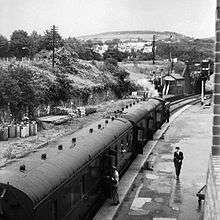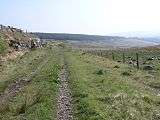Neath and Brecon Railway
| Neath and Brecon Railway | |||||||||||||||||||||||||||||||||||||||||||||||||||||||||||||||||||||||||||||||||||||||||||||||||||||||||||||||||||||||||||||||||||||||||||||||||||||||||||||||||||||||||||||||||||||||||||||||||||||||||||||||||||||||||||||||||||||||||||||||||||||||||||||||||||||||||||
|---|---|---|---|---|---|---|---|---|---|---|---|---|---|---|---|---|---|---|---|---|---|---|---|---|---|---|---|---|---|---|---|---|---|---|---|---|---|---|---|---|---|---|---|---|---|---|---|---|---|---|---|---|---|---|---|---|---|---|---|---|---|---|---|---|---|---|---|---|---|---|---|---|---|---|---|---|---|---|---|---|---|---|---|---|---|---|---|---|---|---|---|---|---|---|---|---|---|---|---|---|---|---|---|---|---|---|---|---|---|---|---|---|---|---|---|---|---|---|---|---|---|---|---|---|---|---|---|---|---|---|---|---|---|---|---|---|---|---|---|---|---|---|---|---|---|---|---|---|---|---|---|---|---|---|---|---|---|---|---|---|---|---|---|---|---|---|---|---|---|---|---|---|---|---|---|---|---|---|---|---|---|---|---|---|---|---|---|---|---|---|---|---|---|---|---|---|---|---|---|---|---|---|---|---|---|---|---|---|---|---|---|---|---|---|---|---|---|---|---|---|---|---|---|---|---|---|---|---|---|---|---|---|---|---|---|---|---|---|---|---|---|---|---|---|---|---|---|---|---|---|---|---|---|---|---|---|---|---|---|---|---|---|---|---|---|---|---|
Legend | |||||||||||||||||||||||||||||||||||||||||||||||||||||||||||||||||||||||||||||||||||||||||||||||||||||||||||||||||||||||||||||||||||||||||||||||||||||||||||||||||||||||||||||||||||||||||||||||||||||||||||||||||||||||||||||||||||||||||||||||||||||||||||||||||||||||||||
| |||||||||||||||||||||||||||||||||||||||||||||||||||||||||||||||||||||||||||||||||||||||||||||||||||||||||||||||||||||||||||||||||||||||||||||||||||||||||||||||||||||||||||||||||||||||||||||||||||||||||||||||||||||||||||||||||||||||||||||||||||||||||||||||||||||||||||
The Neath and Brecon Railway linked the Vale of Neath Railway at Neath with the Brecon and Merthyr Railway at Brecon and also via a connection from Colbren Junction, it linked to the Swansea Vale Railway at Ynysygeinon Junction (sometimes spelt Ynisygeinon).
The southern section from Onllwyn to Neath is still open to goods traffic, although passenger services ceased from October 1962 and the northern section was closed completely
Route
The railway was authorised by an Act of Parliament on 29 July 1862[1] as the Dulas Valley Mineral Railway to transport coal from the Dulais Valley to Neath. It was promoted and constructed by the contractor John Dickson. After being authorised to extend the railway to Brecon, it changed its name to the Neath and Brecon Railway. The railway linked itself to the Swansea Vale Railway by promoting the Swansea Vale and Neath and Brecon Junction Railway. This line had a long gestation period due to Dickson's bankruptcy but eventually when it was opened it gave the Neath and Brecon access to Swansea via running rights. In return, the Neath and Brecon gave full running rights over its system to the Swansea Vale Railway. The Neath and Brecon started operating a passenger service between Brecon and Swansea using these running rights.

An early and unsuccessful purchaser of the new Fairlie locomotive, when in 1863 the railway reached Crynant, coal mining quickly expanded.[2] At Crynant several new mines were opened including the Crynant colliery, Brynteg colliery in 1904, Llwynon colliery in 1905, Dillwyn colliery, and Cefn Coed colliery 1930. These mines led to the expansion of the village.[3]
Brecon
When the railway reached Brecon in 1867, it provided access to the Brecon and Merthyr Railway, the Mid Wales Railway, and the Hereford, Hay and Brecon Railway which were all completed about this time. The initial B&M station at Brecon was at the Watton and the Mid Wales Railway had a station at Mount Street. The Hereford, Hay and Brecon, after belonging to the empire of Savin (originally a draper from Oswestry who became a railway contractor, promoter and operator), was leased and then taken over by the Midland Railway who, by using running powers over the Mid Wales from Three Cocks Junction, gained access to Brecon.
The Midland then leased the Swansea Vale Company's line from around 1874 and in so doing obtained the use of the SVR's running powers over the N&B. This enabled them start running trains from Brecon to Swansea. At around the same time the N&B abandoned its Brecon – Swansea service and decided to lease its main line north of Colbren to the Midland in return for an annual fee. This situation remained in force until around 1930 when the LMS (the 1923 successor to the Midland) decided to abandon its through Swansea Brecon services when the N&B line (then part of the Great Western Railway) was taken back by its owners and rather than being a through route, reverted to being something of a backwater.
The three companies providing services to Brecon consolidated their stations at a newly rebuilt Free Street Joint Station from 1871.[4]
Gradual winding down
In October 1962, all passenger services were withdrawn from Neath to Brecon, leaving only freight services. The line north of Craig y Nos/Penwyllt station closed to Brecon on closure of Brecon station, and remained open south until 1977 to serve the adjacent quarry.[5] The line remains open to Onllwyn, with Celtic Energy using the coal washing plant there through partnership with DB Cargo UK.[6][7] Some of the old Celtic Energy wagons are now housed at the Foxfield Light Railway.[8]

| Wikimedia Commons has media related to Neath and Brecon Railway. |
Chronology
- 29 July 1862 – authorised as the Dulas Valley Mineral Railway
- July 1863 – Company changes name from Dulas Valley Mineral Railway to Neath and Brecon Railway. Powers to extend to Brecon granted
- July 1864 – Swansea Vale and Neath and Brecon Junction Railway incorporated to link Swansea Vale Railway Ynisygeinon Junction to the Colbren Junction, on the Neath and Brecon Railway. Swansea Vale Railway has access over all lines to Brecon under access agreement
- 2 October 1864 – opened from Neath to Onllwyn
- January 1867 – Swansea Vale and Neath and Brecon Junction Railway leased by the Neath and Brecon Railway for 999 years
- June 1867 – Aberbran and Abercamlais opened. Extension from Onllwyn to Brecon opened
- 26 July 1869 – merger of: Swansea Vale and Neath and Brecon Junction Railway; Neath and Brecon Railway[9]
- 1874 – merged railways leased to the Midland Railway[10]
- 2 July 1877 – operations taken over by the Midland Railway. The Midland wanted access directly to Swansea docks[11]
- 1889 – Sir Edward Watkin becomes chairman
- December 1892 – commencement of services from Neath Low Level station
- 1 July 1922 – as a result of the Railways Act 1921, the line becomes part of the Great Western Railway (GWR)
- 1930 – London Midland and Scottish Railway cease passenger services from Swansea/Neath/Brecon to the Midlands
- 1 January 1948, Nationalization of railways, the line becomes part of British Railways
- October 1962 – Passenger services from Neath to Brecon withdrawn[12]
- Present – the line remains open to Onllwyn for goods services only
Stations
- Neath
- Cilfrew
- Crynant
- Seven Sisters
- Onllwyn
- Colbren Junction
- Craig-y-nos/Penwyllt – the substantial station building was funded by opera singer Adelina Patti who lived at Craig-y-Nos Castle[13]
- Cray- Powys
- Devynock & Sennybridge
- Aberbran
- Cradoc
- Brecon
Locomotives
Traces of the line can still be found
See also
References
- Gwyn Briwnant-Jones, Denis Dunstone and Tudor Watkins, The Neath and Brecon Railway: a history (Llandysul : Gomer, 2005). ISBN 1-84323-452-1
- ↑ http://discovery.nationalarchives.gov.uk/details/r/C6528460
- ↑ Neath Port Talbot Museum Service – All For Coal
- ↑ http://www.swansea.gov.uk/westglamorganarchives/index.cfm?articleid=13542&articleaction=print
- ↑ Victorian Brecon – railway stations
- ↑ cyn.JPG :: Craig y Nos/Penwyllt Station looking north on 14 April 2006. The Neath & Brecon line to this point lingered on to serve the adjacent quarry until 1977 (officially closed 1981)
- ↑ onll1.JPG :: More 'Neath & Breconry'. This is the scene at Onllwyn on 25 July 2006. Looking North, the washery is to the right and formation of the former line towards Colbren Junction can be seen beneath the footbridge to the left
- ↑ onll2.JPG :: Onllwyn looking south on 25 July 2006. The line is still in use for coal trains to and from Onllwyn Washery. The position of the platform is clear in the centre of the picture
- ↑ BR 21ton hoppers
- ↑ railways
- ↑ Swansea Vale Railway
- ↑ Archives Network Wales – British Railways Board Records
- ↑ http://www.eclipsehistory.org.uk/steam12.htm
- ↑ cyn2.JPG :: Another view of Craig y Nos/Penwyllt looking south on 14 April 2006. It has been documented that the substantial station building was funded by opera singer Adelina Patti who lived at Craig Y Nos Castle
External links
- Neath and Brecon Railway at railscot.co.uk
- Article on last train from Neath to Brecon
- Article on modern exploration of the Brecon Forest Tramroads
- The Neath and Brecon Railway



